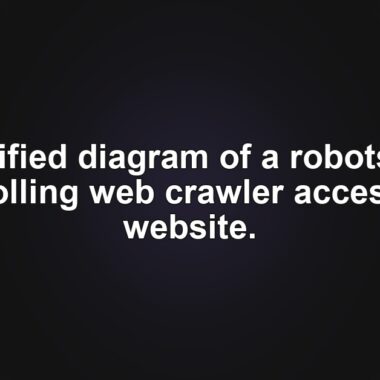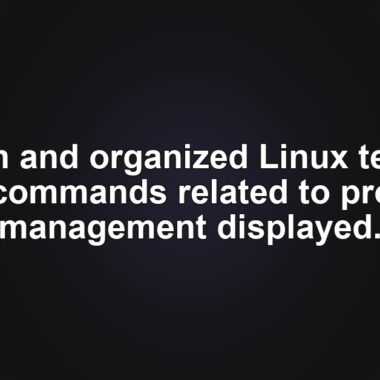Mastering HTML5: A Comprehensive Guide for Beginners and Intermediates
HTML5 is the go-to version for creating dynamic and interactive web pages today. Understanding its features can elevate your web development skills.
What Is HTML?
HTML is the backbone of the World Wide Web, used by developers to create web page elements like text, links, and multimedia. It operates through various tags such as headings and paragraphs to define structures. However, HTML is static, so it’s often combined with CSS and JavaScript for interactive websites.
What is HTML5?
HTML5 is the latest iteration of HTML, providing enhanced capabilities for multimedia, new tags, and APIs, making it more robust for modern web development.
HTML vs HTML5 – Comparison
While both HTML and HTML5 serve to develop web pages, HTML5 introduces new features like native audio and video support, new elements, and APIs that weren’t available in previous versions.
- Removed elements include
isindex,noframes, andapplet. - New form controls like
email,number, andcolor. - New elements such as
video,nav, andcanvas. - New attributes like
asyncandmanifest.
Key Advantages Provided by HTML5 for Developers
HTML5 offers significant improvements for developers, allowing for more flexibility and functionality.
Persistent Error Handling
HTML5 standardizes error handling, saving developers time and resources by improving parsing algorithms.
Improved Semantics for Elements
HTML5 enhances semantic roles, simplifying the code and improving accessibility with elements like section and article.
Enhanced Support for Web Application Features
HTML5 allows browsers to function as application platforms, reducing the need for JavaScript-based workarounds and enhancing website performance.
Mobile Web Made Easier
HTML5 supports mobile-friendly features, catering to the increasing use of mobile devices for web access.
The Canvas Element
The canvas element allows for drawing graphics using JavaScript, enhancing web applications with dynamic visuals.
The Menu Element
The menu and menuitem elements improve web interactivity by representing menu commands in applications.
Customizable Data Attributes
HTML5’s data-* attributes allow for safe custom data storage, enhancing web pages without needing server-side lookups.
Web Storage to Replace Cookies
HTML5’s local storage replaces cookies, offering larger and more permanent data storage on the client-side.
HTML5 Advantages for End-Users
HTML5 benefits end-users with reduced mobile browser crashes, native audio/video support, geolocation, offline caching, and enhanced web forms.
How Secure is HTML?
While HTML5 is secure, websites can still be vulnerable to attacks. Security depends on careful development and understanding platform vulnerabilities like those in WordPress. Here are some security tips:
- Keep software and plugins up-to-date.
- Remove unnecessary plugins and files.
- Use HTTPS and SSL for secure connections.
- Enforce strong password policies.
- Choose a secure web host like Hostinger.
- Back up your website regularly.
- Scan for malware frequently.
- Limit login attempts and manage user access.
- Install a Web Application Firewall (WAF).
Can I Learn HTML5 by Knowing HTML?
Yes, learning HTML5 is a natural progression from HTML. Most features build on what you already know, making it easy to transition.
HTML5 Cheat Sheet
To aid your learning, here is a downloadable cheat sheet with the most common HTML5 tags and attributes.
Download complete HTML cheat sheet
Should I Switch to HTML5?
Switching to HTML5 is highly recommended for its open standards, security enhancements, and performance improvements over Flash.
Pros of HTML5
- Free and open-source.
- Cross-platform compatibility.
- Native audio and video support.
- Improved SEO potential.
- Reliable storage options.
Cons of HTML5
- Different video formats across browsers.
- Incompatible with legacy browsers.
- Inconsistent delivery across devices.
- Media licensing issues.
- Not ideal for advanced game development.
If you’re considering moving from Flash to HTML5, follow these steps:
- Prepare for the transition by auditing assets.
- Check and document source files.
- Extract media and content for reuse.
- Use conversion tools like Google Web Designer or Adobe Animate.
- Test the new HTML5 website across devices.
Conclusion
HTML5 is a powerful markup language that enhances web development with new features and improved performance. Switching from older technologies like Flash to HTML5 is beneficial for modern web standards. For reliable hosting to support your HTML5 projects, consider using Hostinger.
We hope this guide helps you understand the value of HTML5. Good luck on your web development journey!
👉 Start your website with Hostinger – get fast, secure hosting here 👈
🔗 Read more from MinimaDesk:
- How to Disable xmlrpc.php in WordPress: A Step-by-Step Guide
- Mastering the WP-Content Directory in WordPress
- The Ultimate Guide to WP-Content: Access, Upload, and Hide Your WordPress Directory
- How Many WordPress Plugins Are Too Many? Optimize Your Site for Success
🎁 Download free premium WordPress tools from our Starter Tools page.








